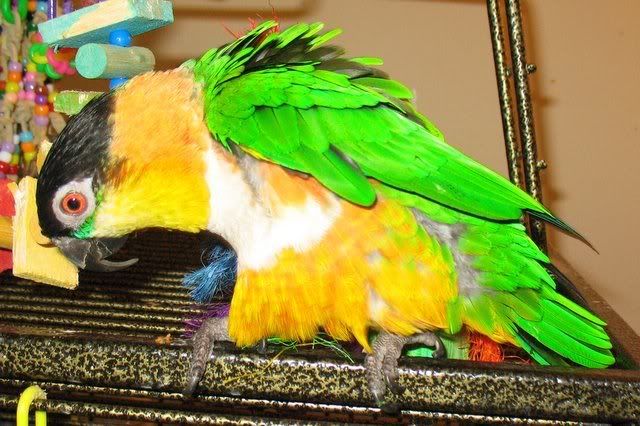With many things, the earlier you catch a problem, the easier it may be to correct. This vet said that a weight loss/gain of 5% of the parrot's body weight indicates a vet visit is in order (my vet has told me 10% in the past). I try to always weigh my parrots first thing in the morning, after they've eliminated everything from their system, and before they put any more in.
Although I know this, I don't always do it. I'll get in the groove and do weekly weigh-ins for several months, but then I just stop doing them and months go by again.
I pulled out the scale and weighed everyone this weekend. I don't have a fancy parrot scale with a perch; my parrots just perch on the flat surface.
 Looking over the trends, it's interesting to see the weight gain the greys have made over the years. When Max was a baby, she was consistently around 300 grams. As she's matured, and especially since she started building muscles through flight, she now hovers around the 350 gram mark. That's near the upper limit for timnehs!
Looking over the trends, it's interesting to see the weight gain the greys have made over the years. When Max was a baby, she was consistently around 300 grams. As she's matured, and especially since she started building muscles through flight, she now hovers around the 350 gram mark. That's near the upper limit for timnehs!When Stella came to us, she weighed around 400 grams; pretty small for a congo. She's now in the 420 gram range. But she's still tiny compared to many of the greys I see at the rescue where I volunteer.
I really enjoy looking back over their log and seeing the changes; I need to remember to do this more frequently for all of the parrots (I need Thomas's help to get Rocky on the scale!)


3 comments:
Stella is small! 400 is about what Claudia weighed when I got her, she is now very trim and healthy at around 500 grams! I call her Big Bertha for that and her rather clumsy hop-hop-hop wadddle that she uses to get around.
Yo-yo is tiny from being starved as a baby- he eats more than my quakers, has lots of muscle, and is still only in the low 70s. Vets have a tendency to want to put him on antibiotics as soon as they see him; finally the 2 I have now are understanding.
My quakers look different, so I am pretty sure they are different subspecies. I think that is backed up with their weights, as Lola is trim in the low 130s, while Frank's optimum weight is 110, whenever it is there. Frank is like Claudia, who still occasionally regresses and needs handfeeding, only worse. Frank goes into rather frequent, erm, depressions, and won't eat, so his weight is often closer to 100-105. If I didn't watch him, I know it would go much lower.
I'm sorry but I did not read a word of this post -- I was so entranced by the adorable picture -- "Look at me! I'm on the scale!"
(faints from the overwhelming cute)
Meg -- yes, Stella is tiny. Max would be the Big Bertha in this house :)
I didn't even realize there were different quaker subspecies! But that makes sense, thinking back on the quakers I have known. There are some definite size differences!
Poor Frank; he is so lucky to have you looking after him.
Wendy -- thanks for the nice comment :) She definitely has a way of turning her head for maximum cuteness! A talent she shares with Lucy.
Post a Comment